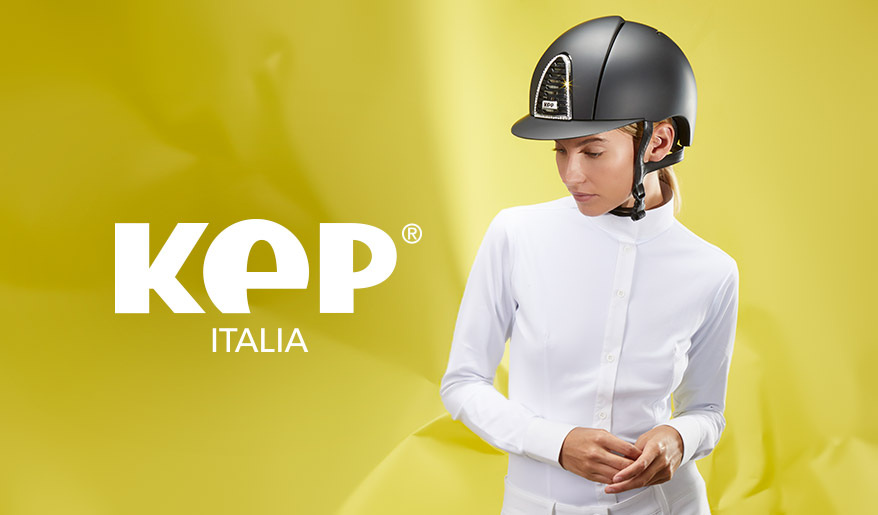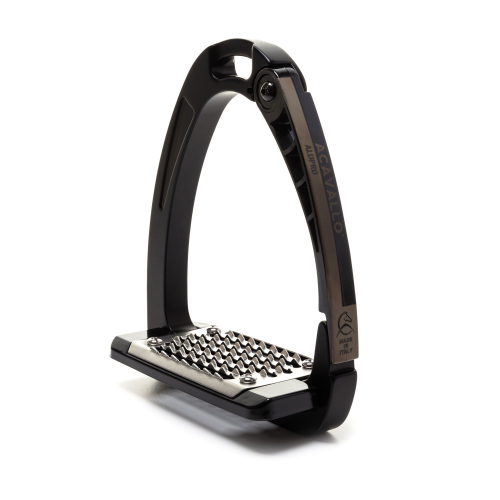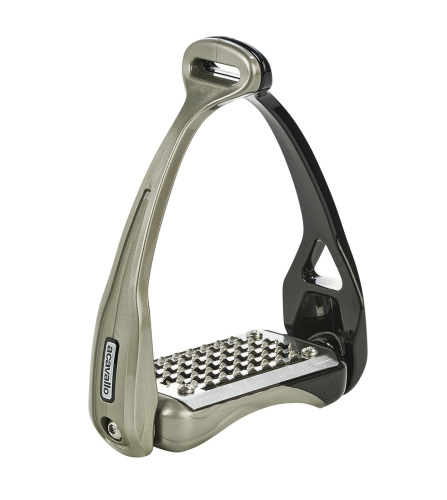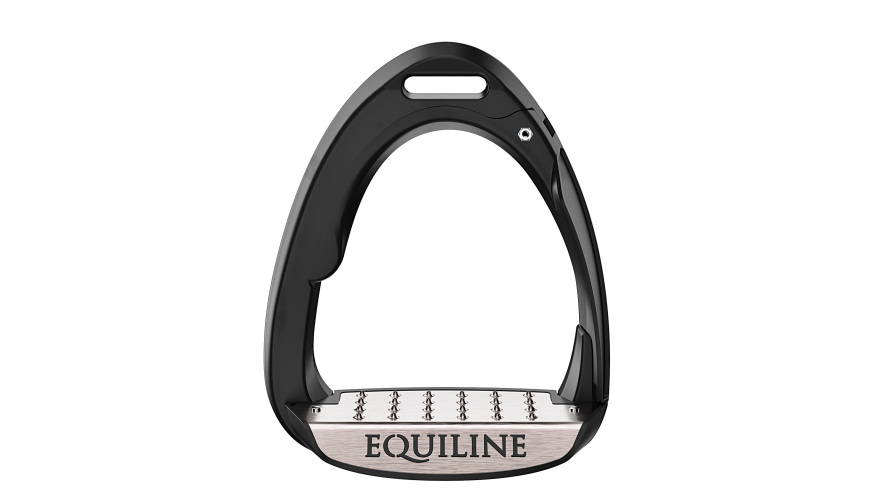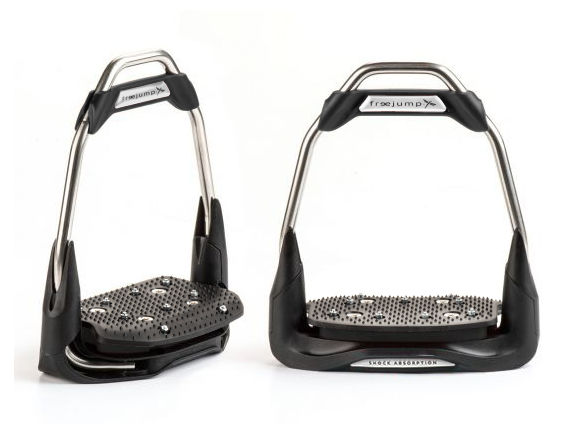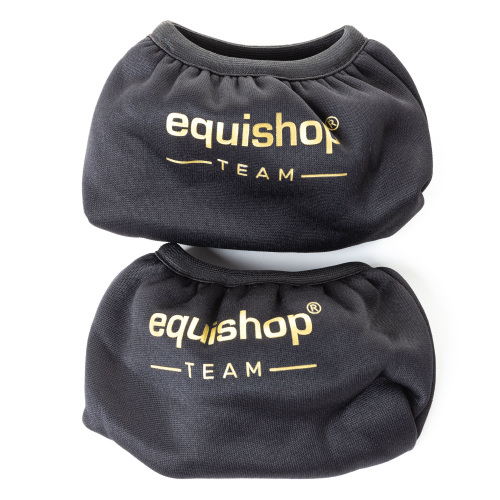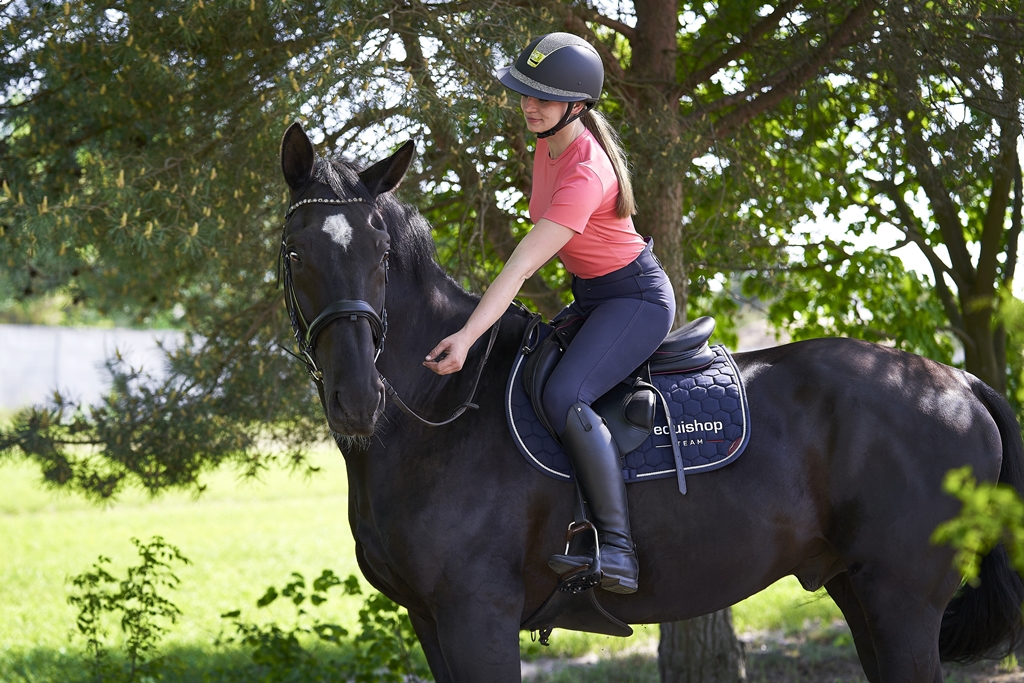
Photo by Klaudia Kanicka
A correct seat requires the rider to have a proper foot placement in the stirrups. This is possible thanks to the ankle, yet sometimes mobility of the joint and appropriately built muscles are not enough. What kind of influence do accurately fit stirrups have on the rider’s seat and safety?
How ankle joint work during a ride
It is regarded that the correct position of the ankle should be slightly bent upwards, which basically means the popular phrase “heels down” (but beware – there can be too much of a good thing). What’s more the whole leg should be positioned to allow the toes to be facing forward with the knee bend. Stirrup should support the metatarsophalangeal joints, colloquially the widest part of the foot. This leg alignment offers the best shock absorption during a ride. The optimal bent in the knee and ankle with the correct support from the muscles guarantees an ergonomic ride and minimises the risk of overbearing of both joints.
Stirrups and ankle joint
Sometimes a rider might have difficulty in correctly positioning their feet in a stirrup due to reduced muscle elasticity or the unfavourable design of the stirrup itself. The latter situation can occur when a stirrup has a slippery and incorrectly shaped pad, or the stirrup is too narrow. This leads to many negative biomechanical changes and causes the ankle and knee joints to work improperly and not absorb the shock created during the horse’s movement. Incorrect position has a direct impact on the health of the joints and can lead to pain.
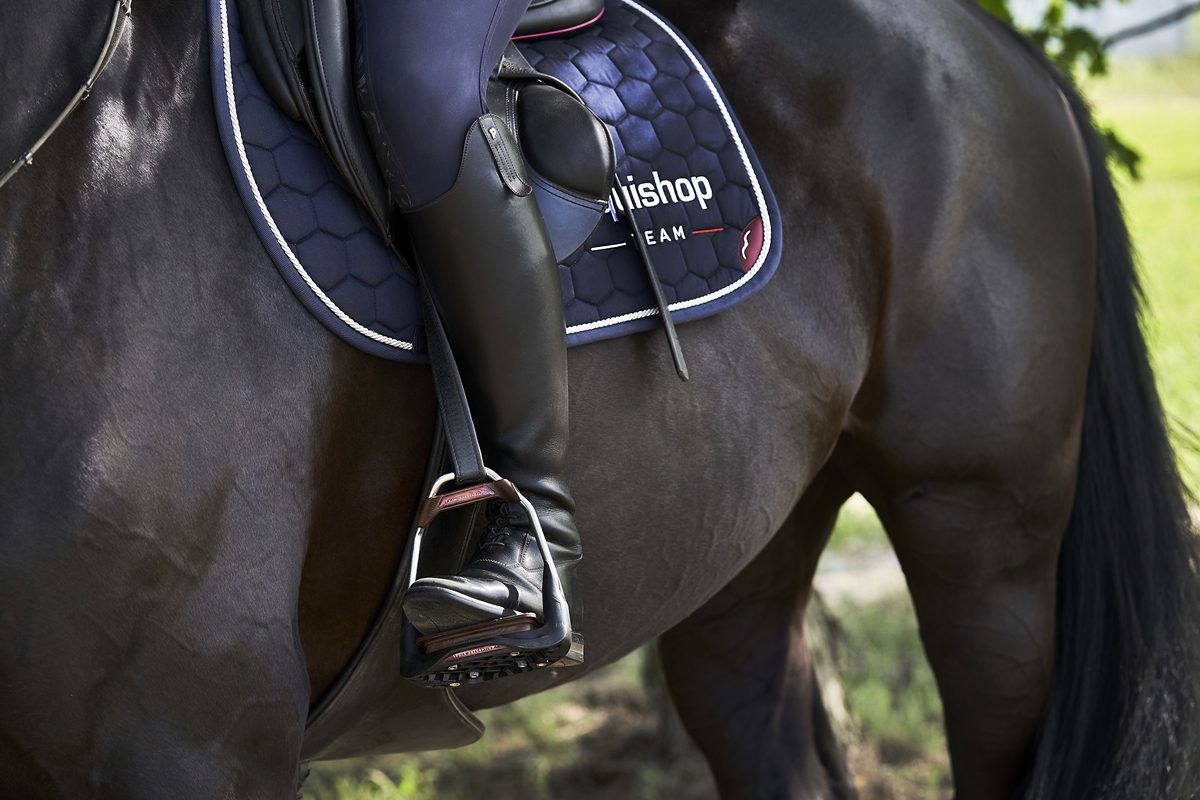
Photo by Klaudia Kanicka Freejump Air’s 0-30 stirrups
Safety during falls
One of the research projects done on riders uncovered fractures in the foot or ankle joint, which occurred as a result of falling over with the horse and trapping the foot in a stirrup between the animal and the ground (Ceroni et al. 2007). This type of accident can cause numerous bone dislocations in the foot, which can sometimes be a ground for amputation. Specialists involved in analysing the biomechanics of foot injuries in the same study also suggest that adequately fitted horse riding boots and stirrups could prevent some fractures, and in consequence, protect riders, especially those less experienced, from serious injuries.
Sometimes a dangerous situation may occur when a rider’s foot gets stuck in a stirrup after a fall and the person is dragged by the horse. This can result in ankle and knee sprains, ligament tears, joint capsule damage or forefoot dislocations, as well as injuries to other - distant parts of the musculoskeletal system such as the knees, hips, spine and even the upper limbs, neck or head. Therefore, choosing the right stirrups is crucial as it can keep the rider safe and prevent serious injuries in case of a fall.
What kind of stirrups riders should avoid?
When choosing stirrups, you should avoid those:
- that have slippery pads, which can cause the foot to go further into the stirrup,
- that have too grippy pads, which can prevent the foot from slipping out of the stirrup during a fall and in consequence cause serious injuries,
- are heavy – if the rider’s foot slips out of the stirrup during a ride, it can get hit by the stirrup and cause injury,
- that have slanted pads which disrupts the normal position of the ankle joint causing its excessive bowing or twisting and overloading of joint structures,
- are too narrow – this can prevent the foot from slipping out during a fall.
What kind of stirrups you should choose?
Safety and comfort should be the most important criteria when choosing stirrups. Adequately chosen stirrups should be wide and high enough to allow the foot to slip out easily during a fall. At the same time, the pad should prevent the foot from sliding around but at the same time it cannot prevent the foot from making movement that was intended by the rider. The Freejump Air’s stirrups perfectly comply with all of those conditions. Additionally, the shape of the stirrup which resembles a bow distributes the pressure evenly over the whole foot, which prevents one-sided overbearing of the ankle joint. It’s worth noting that the material of the stirrups is so light that if the rider loses the stirrup during a ride, the ankle and tibia will not suffer when the stirrups hit them. The pad has special spikes that on the one hand secure the foot in the stirrups but on the other hand, do not lock the foot in the stirrup and allow the foot to slip out easily in case of a fall. The additional shock absorption system made of polyamide works very effectively and relieves stress on joints.
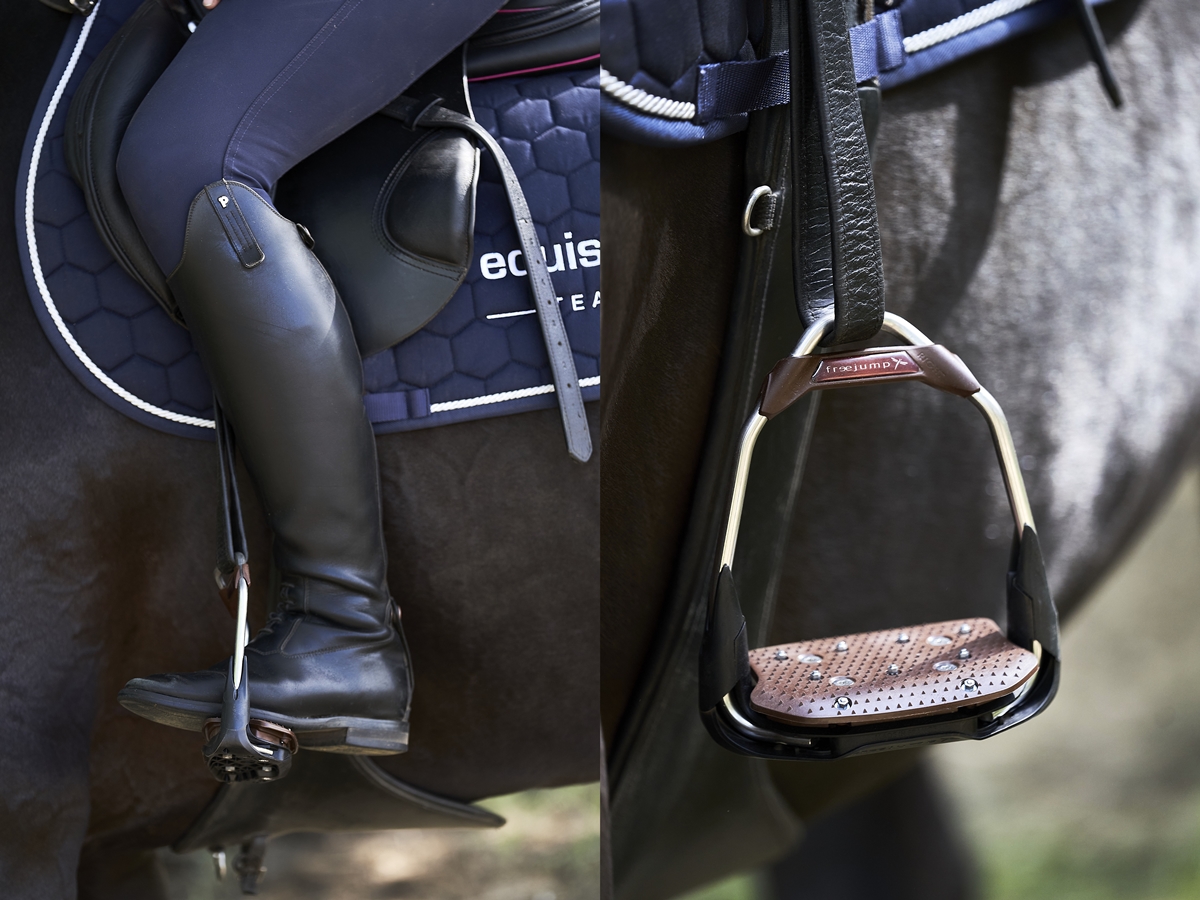
Photo by Klaudia Kanicka Freejump Air’s 0-30 stirrups
Are stirrups important?
Good stirrups should keep the rider safe and comfortable. Regardless of the equestrian discipline or experience level, safety should be everyone’s highest priority, which is why you should choose stirrups that will reduce the risk of injuries and relieve stress on joints. In our musculoskeletal system every part is connected to each other, therefore if one joint is working improperly, it will affect all the other joints and muscles. This is also true for the ankle joint. That is why you should take care of it. You can do it not only through muscle exercises that are based on training programmes but also by choosing the right equestrian equipment that will ensure safety and shock absorption.
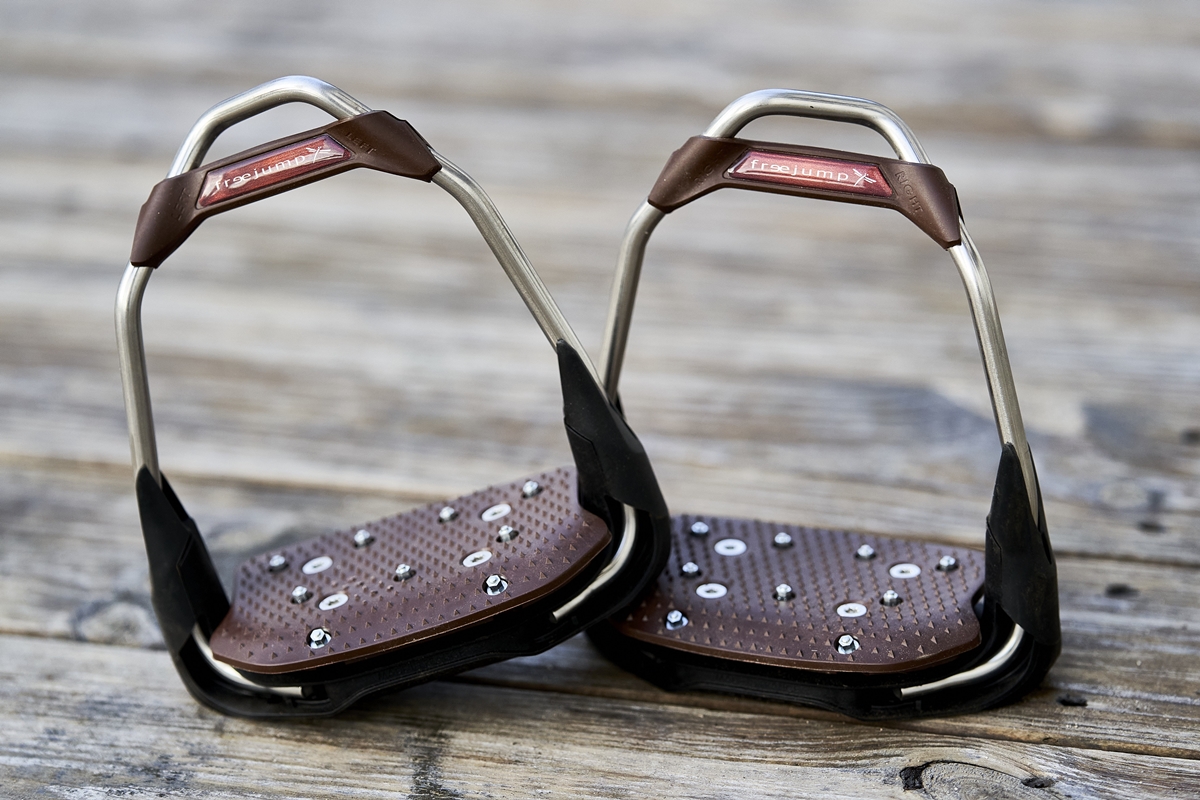
Photo by Klaudia Kanicka Freejump Air’s 0-30 stirrups
Author:
Julia Walatek
Physiotherapist
Riding instructor accredited by Polish Equestrian Federation
Dressage and show jumping rider
Are you looking for the right stirrups? Check out our offer! Click here!
Equestrian store: +48 784 039 784
E-mail: contact@equishop.com
News from equestrian store Equishop:




